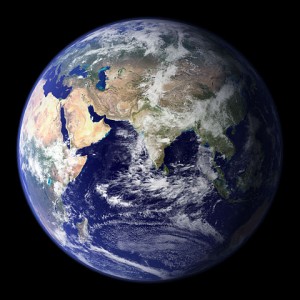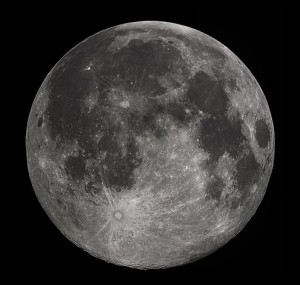Difference Between Earth and Moon
Table of Contents
Earth vs Moon
Earth and Moon are very different planetary objects and hence a number of differences can be observed between them. As we all know, earth and moon form a part of our solar system. The surface area of the moon is 37.8 million square km and the surface area of the earth is 510 million square km. The moon is situated 384, 000 km away from the earth. The earth is situated 149, 668, 992 km (93, 000, 000 miles) from the sun. The earth’s distance from the sun is conducive to life. Also, the moon does not have water, but the earth has water. In fact, 71 percent of earth’s surface is covered with water. That is why it appears as a blue colour planet when you look at it from space.
More about Earth
The earth is a planet. It is able to support life due to the fact that is situated in the right distance from the sun. It is not too close to the sun or too far way. Moreover, its atmosphere is made up of suitable gases in the right composition. The earth comprises of water, air, and the apt amount of heat for the living things to survive with good health.

It is important to know that the rotation of the earth is different from the revolution of the earth. Rotation of the earth is spinning of the earth on its axis. Revolution of the earth is the movement of the earth around the sun. It is important to know that the earth spins or rotates on its axis from west to east. That is why we think the sun rises from the east and sets from the west. This rotation is the reason for the formation of day and night. The side of the earth that faces the sun experiences day time. The side of the earth that does not face the sun faces night time. The earth completes one rotation every 24 hours. As the earth rotates on its axis, it also revolves or moves around the sun. The earth completes one revolution around the sun in about 365 days and this period is called a year.
More about Moon
The moon, on the other hand, is the natural satellite of the earth. Satellites are objects in space that move around other objects. The moon is our nearest neighbor in space. It takes about 28 days for the moon to go around the earth once. It takes the same time to go around in its own axis. This movement around the earth gives rise to phases of the moon.

There are two main phases of the moon, namely the full moon and the new moon. It takes roughly two weeks between new moon and a full moon. The moon cannot be seen when it is a new moon. It is important to know that the moon does not give light of its own. On the other hand, it reflects the light from the sun.
What is the difference between Earth and Moon?
• Earth is a planet. Moon is the satellite of the earth.
• Earth supports life. Moon does not support life.
• Earth rotates on its own axis and goes around the sun. Moon rotates on its own axis and goes around the earth.
• The rotation of the earth takes 24 hours. The revolution of the earth takes 365 days. Both the rotation and revolution of the moon take about 28 days.
• When it comes to earth, the side that faces the sun during rotation experiences day time while the other side experiences night time. The side of the moon that we cannot see from earth is known as the dark side of the moon.
• Earth is about four times the size of the moon.
• Earth has different spheres that when combined support life. They are atmosphere, hydrosphere, lithosphere, biosphere, and cryosphere. The moon does not have such spheres.
• The surface of the moon is filled with craters. The surface of the earth is covered with trees, soil, water and nowadays man-made structures.
• The earth experiences different seasons because the axis of the earth is tilted 23.5 degrees. As a result, when it goes around the sun, the seasons change. However, moon does not experience such seasons. It does have phases, which are known as full moon and new moon.
Images Courtesy:
ncG1vNJzZmivp6x7pbXFn5yrnZ6YsqOx07CcnqZemLyue8OinZ%2Bdopq7pLGMm5ytr5Wau26xwKuroWWRo7FuwtJmpKinnmQ%3D